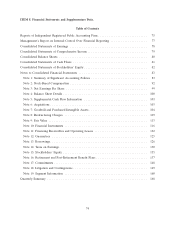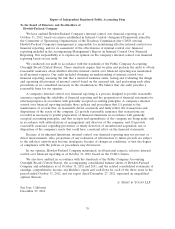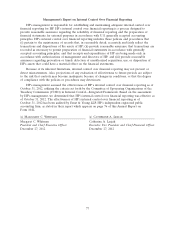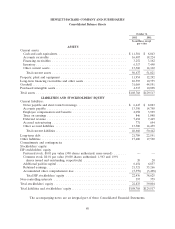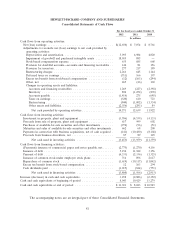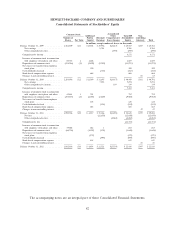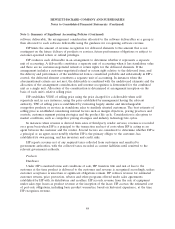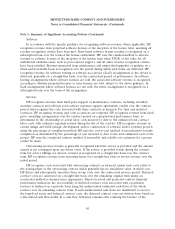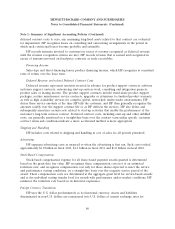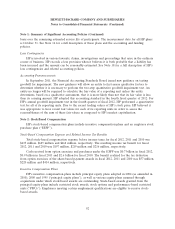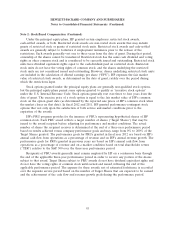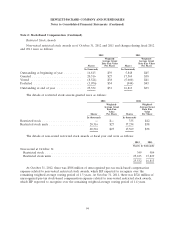HP 2012 Annual Report Download - page 92
Download and view the complete annual report
Please find page 92 of the 2012 HP annual report below. You can navigate through the pages in the report by either clicking on the pages listed below, or by using the keyword search tool below to find specific information within the annual report.HEWLETT-PACKARD COMPANY AND SUBSIDIARIES
Notes to Consolidated Financial Statements (Continued)
Note 1: Summary of Significant Accounting Policies (Continued)
software deliverable, the arrangement consideration allocated to the software deliverables as a group is
then allocated to each software deliverable using the guidance for recognizing software revenue.
HP limits the amount of revenue recognition for delivered elements to the amount that is not
contingent on the future delivery of products or services, future performance obligations or subject to
customer-specified return or refund privileges.
HP evaluates each deliverable in an arrangement to determine whether it represents a separate
unit of accounting. A deliverable constitutes a separate unit of accounting when it has standalone value
and there are no customer-negotiated refund or return rights for the delivered elements. If the
arrangement includes a customer-negotiated refund or return right relative to the delivered item, and
the delivery and performance of the undelivered item is considered probable and substantially in HP’s
control, the delivered element constitutes a separate unit of accounting. In instances when the
aforementioned criteria are not met, the deliverable is combined with the undelivered elements and the
allocation of the arrangement consideration and revenue recognition is determined for the combined
unit as a single unit. Allocation of the consideration is determined at arrangement inception on the
basis of each unit’s relative selling price.
HP establishes VSOE of selling price using the price charged for a deliverable when sold
separately and, in rare instances, using the price established by management having the relevant
authority. TPE of selling price is established by evaluating largely similar and interchangeable
competitor products or services in standalone sales to similarly situated customers. The best estimate of
selling price is established considering internal factors such as margin objectives, pricing practices and
controls, customer segment pricing strategies and the product life cycle. Consideration is also given to
market conditions, such as competitor pricing strategies and industry technology life cycles.
In instances when revenue is derived from sales of third-party vendor services, revenue is recorded
on a gross basis when HP is a principal to the transaction and net of costs when HP is acting as an
agent between the customer and the vendor. Several factors are considered to determine whether HP is
a principal or an agent, most notably whether HP is the primary obligor to the customer, has
established its own pricing, and has inventory and credit risks.
HP reports revenue net of any required taxes collected from customers and remitted to
government authorities, with the collected taxes recorded as current liabilities until remitted to the
relevant government authority.
Products
Hardware
Under HP’s standard terms and conditions of sale, HP transfers title and risk of loss to the
customer at the time product is delivered to the customer and revenue is recognized accordingly, unless
customer acceptance is uncertain or significant obligations remain. HP reduces revenue for estimated
customer returns, price protection, rebates and other programs offered under sales agreements
established by HP with its distributors and resellers. HP records revenue from the sale of equipment
under sales-type leases as product revenue at the inception of the lease. HP accrues the estimated cost
of post-sale obligations, including basic product warranties, based on historical experience, at the time
HP recognizes revenue.
84


